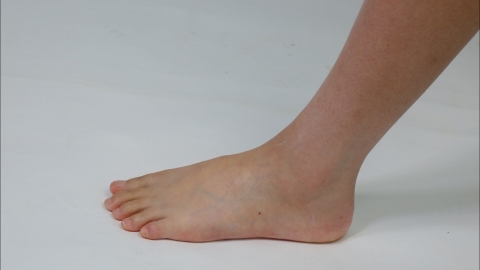What causes pain in the toes?
Generally, toe pain may be caused by factors such as inappropriate footwear, excessive exercise, paronychia, plantar fasciitis, or gouty arthritis. Symptomatic management may involve general treatments, medications, and other appropriate measures. If symptoms persist or worsen, timely medical consultation and comprehensive examinations are recommended to determine the exact cause. Detailed explanations are as follows:

1. Inappropriate Footwear
Long-term use of tight, narrow, or rigid shoes can compress and rub the toes, causing local skin abrasion, redness, swelling, and pain. In severe cases, joint deformities may occur. It is recommended to switch to suitable footwear, avoid high heels and overly tight shoes, and apply heat compresses or massage the painful area to promote blood circulation and relieve pain.
2. Excessive Exercise
Long periods of high-intensity activities such as running or jumping may place excessive pressure on the toes, triggering inflammation and minor injuries, which can cause pain, possibly accompanied by local swelling and stiffness. Daily routines should avoid overexertion, pay attention to exercise duration and intensity, and combine heat or cold compresses to alleviate symptoms.
3. Paronychia
Infection of the skin around the toenail edge can cause paronychia, commonly affecting the big toe. It can lead to severe pain, often accompanied by redness, swelling, and pus discharge. Local cleaning and disinfection are recommended, along with topical antibiotics such as erythromycin ointment, mupirocin ointment, or oral minocycline hydrochloride capsules under a physician's guidance to control the infection.
4. Plantar Fasciitis
Overuse and insufficient rest can damage the foot's fascia, leading to plantar fasciitis. Inflammation of the plantar fascia may extend to the toes, causing pain, often accompanied by increased pain in the sole of the foot upon waking up in the morning or after prolonged standing. It is recommended to use medications such as naproxen tablets, celecoxib capsules, or eperisone hydrochloride tablets under a physician's guidance to relieve symptoms.
5. Gouty Arthritis
Gouty arthritis is a condition caused by abnormal uric acid metabolism, leading to deposition of urate crystals in the joints. Toe joints, especially the big toe joint, are among the most commonly affected sites. Symptoms typically include redness, swelling, and warmth, with pain often occurring suddenly at night or in the early morning, lasting for several days to weeks. It is recommended to use medications such as febuxostat tablets, benzbromarone tablets, or hydrocortisone tablets under a physician's guidance to relieve pain and lower uric acid levels.
In daily life, it is recommended to ensure adequate rest and avoid excessive fatigue and strenuous exercise, which can help reduce the occurrence of foot pain.
References
[1] Qiu Yuanzhou, Gao Yanjun, Ruan Peican, et al. Structural bone graft fusion for the treatment of severe gouty arthritis of the first metatarsophalangeal joint: a report of 7 cases[J]. Chinese Journal of Traditional Chinese Medicine Traumatology & Orthopedics, 2025, 33(03): 64-67.
[2] Zhao Xiaobin. Troublesome Paronychia[J]. Health Spectrum, 2024, (06): 28.







